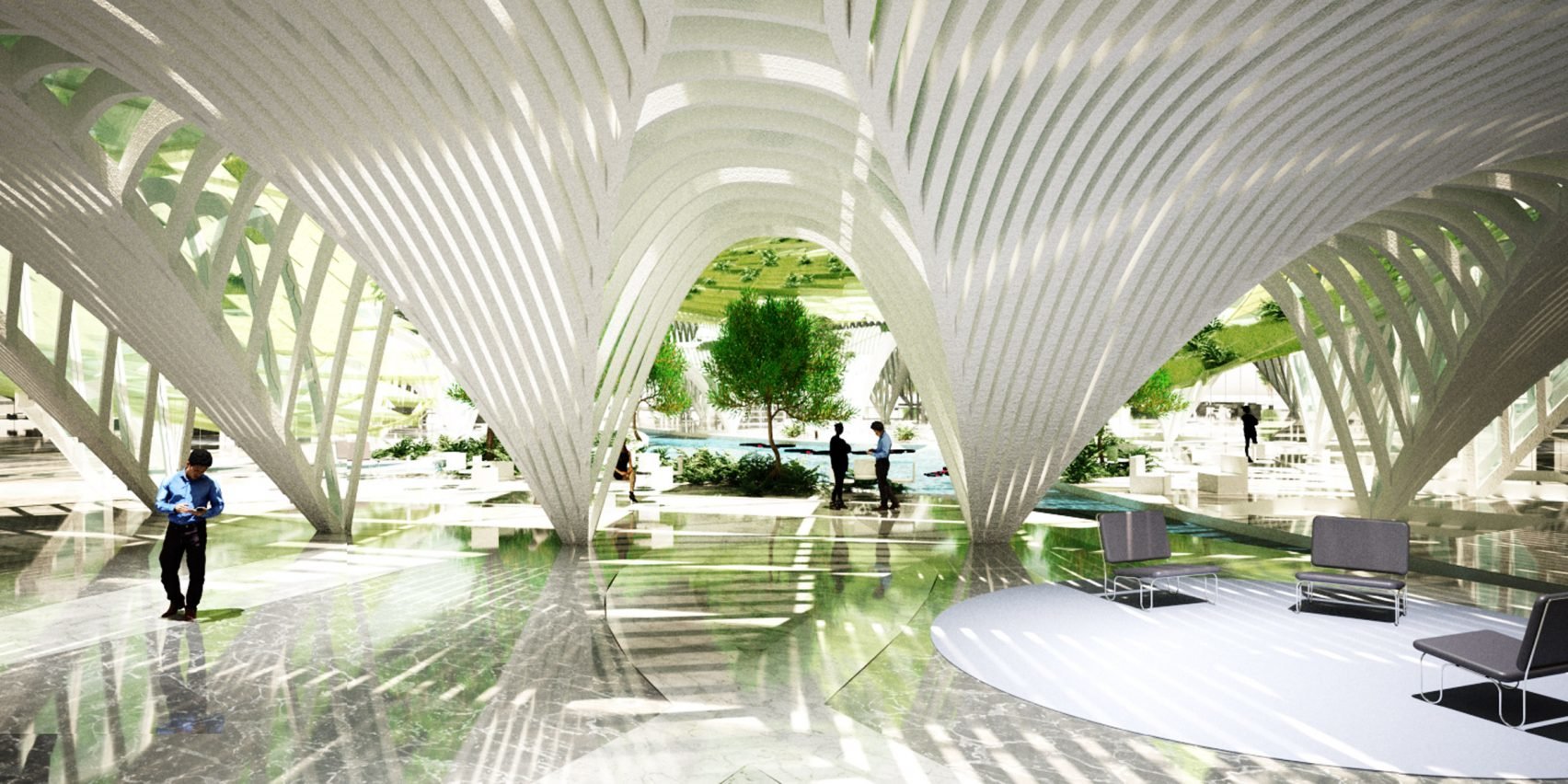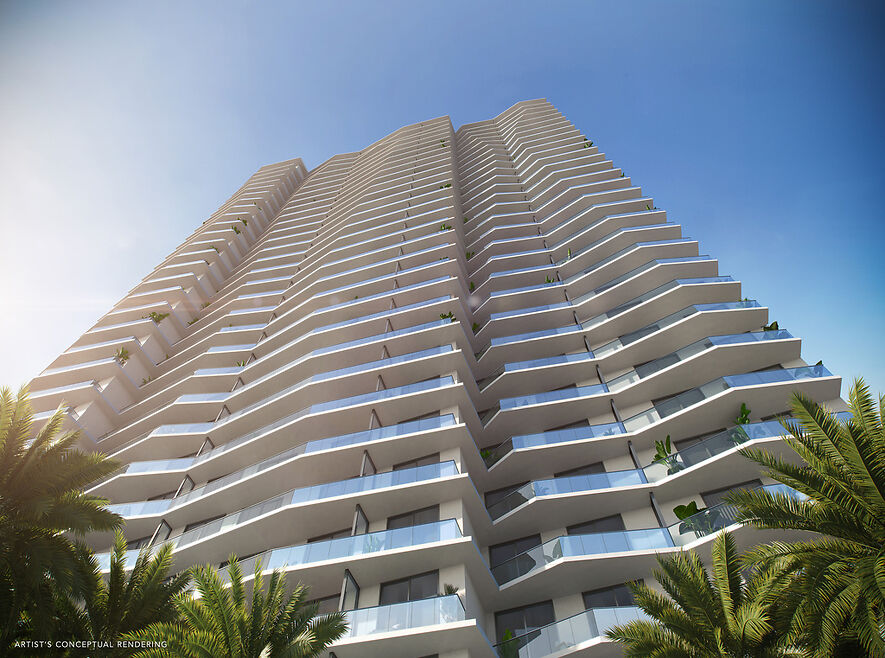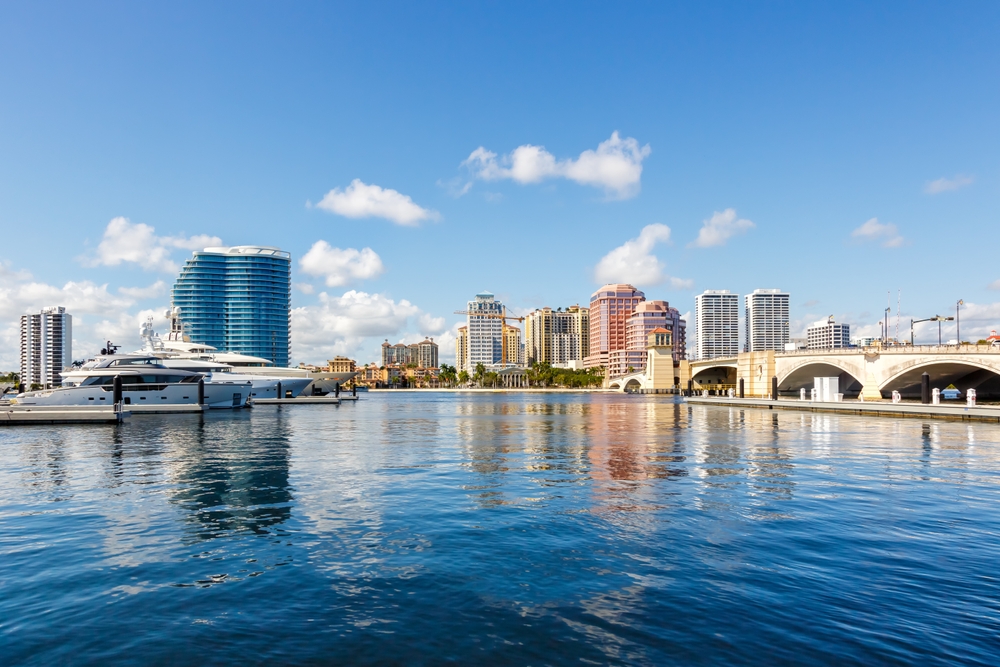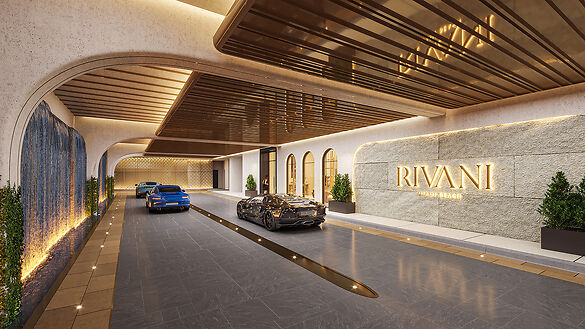While the U.S. takes steps to reverse years of ecological progress, China and France have joined forces to plot a path forward to help the planet and they are using real estate to do it.
The French Dream Towers is a project just launched out of the West Lake of Hangzhou, which uses microalgae exteriors. The structures’ renderings look like some kind of massive twisting sea creature with glittering metallic skin rising out of the depths. What it is, in fact, is one of the most technologically advanced buildings ever to be conceived and marks a giant step forward for the integration of form and function, creating a symbiotic relationship between the building structure and nature. The exterior glass panels actually consist of two glass panes with a pocket of air between them to foster bioreactive cultures in a greenhouse environment. It offsets the building’s environmental impact by absorbing carbon dioxide and producing oxygen.
The building’s location, Lake Hangzhou, is a UNESCO World Heritage site dotted by pagodas, lily ponds, rockeries and wood causeways -- one of the most peaceful, natural settings in China. The project was funded by a Chinese developer and a consortium of French businesses and designed by XTU Architects.
Anouk Legendre, co-founder of XTU Architects explained the logic behind the design to Forbes.
“The cultivation of the micro-algae on the building façade is a process that has been in development at XTU for many years,” he said. “It allows for a symbiosis. The bio facade uses the thermal building to regulate the culture temperature of algae and at the same time these façades allow a much better insulation of buildings.”
Glass towers have had a bad rap environmentally for many years because they heat up in the summer requiring a heavy use of air conditioning. Also, the reflective glare from the sun has been known to be harmful to the environment around it. In the winter, they are poor insulators. Now the use of algae could be a game changer. Not only could the micro-algae be used for renewable energy, the medicinal properties of algae could be harvested as well.
Like an equatorial rain forest, the top of the towers will foster tree filled greenhouses, not only providing a serene and peaceful place to relax but also a natural air filtration system. The shape of the towers will serve as a rainfall collection system where the two structures are joined at the base, reusing the water.
The French influence is more than just scientific. Each of the towers will be themed on a French expertise. A food tower will feature top restaurants and a panoramic view, while the art building will have its own gallery and artist residencies and a third tower will be populated with progressive and visionary business — start-ups and co-working spaces.
“Hangzhou is a city where water is very present, we want to continue, update and highlight this tradition," explained the architects.
Photo credit/courtesy of: Dezeen.com







